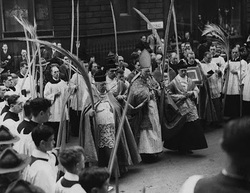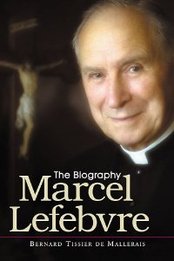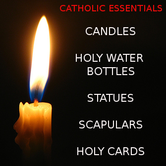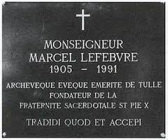
(Green = 1955-56 Red = 1952)
1. Ordo Hebdomadae Sanctae of 1955-1956 (hereinafter: OHS 1956): innovation of using the color red for the procession with palms but violet for the Mass. (15)
Commentary: In the archives of the Commission we read: "One thing that might perhaps be done ... the color red might be restored as was used in the Middle Ages for this solemn procession. The color red recalls the royal purple." A little further on: "In this way, the procession is distinguished as something sui generis." (16) One does not wish to deny that red might signify the royal purple, although the assertion that this was the medieval practice remains to be proven; but it is a peculiar way to proceed, this search for things that are sui generis [sic], and then the decision that red must have a positively determined symbolism on Palm Sunday, even though red in the Roman rite is the color of Martyrs or of the Holy Spirit. In the Ambrosian rite it is used on this Sunday to symbolize the Blood of the Passion and not royal status. In the Parisian rite, the color black was used for both ceremonies [procession and Mass--transl.]. In some dioceses it was foreseen that one color would be used for the procession and another for the Mass, a practice borrowed perhaps from the feast of the Purification of the Blessed Virgin, (17) and one which does not make much sense when applied to Palm Sunday, as Léon Gromier relates. This innovation must be attributed, not to a documented practice, but to an extemperaneous idea of a "professor of Pastoral Theology at a Swiss seminary." (18)
In the Missale Romanum of 1952 (hereinafter: MR 1952): there is the unvarying use of violet for both the procession and the Mass. (19)
2. (OHS 1956): Abolition of the folded chasubles and, consequently, the "broad stole" or stola largior. (20)
Commentary: This touches on one of the oldest customs, one which had survived from earliest antiquity until then and which showed forth the ancient nature of Holy Week, which no one had ever dared alter because of both the veneration with which it was regarded as well as the extraordinary nature of these rites and of the extraordinary sorrow of the Church during the days of Holy Week.
(MR 1952): Use of folded chasubles and the broad stole during the singing of the Gospel by the deacon. (21)
3. (OHS 1956): Novelty of blessing the palms while facing the faithful, with back turned to the altar, and in certain cases, turned to the Blessed Sacrament. (22)
Commentary: For the sake of the participation of the faithful, the idea is introduced of liturgical actions done facing the people, but with the back turned towards God: "Influential [in the reform] was the visibility of particular gestures in the celebration, detached from the altar and performed by the sacred ministers while facing the people." (23) A blessing was invented that was performed over a table which stood between the altar and the altar rail, while the ministers faced the people. A new concept was introduced of liturgical space and of orientation during prayer.
(MR 1952): The palm branches are blessed on the altar, on the Epistle-side "horn," after a reading, a gradual, a Gospel, and above all a Preface with a "Sanctus" that introduces the prayers of blessing. This is the extremely ancient rite of the so-called "Missa sicca." (24)
4. (OHS 1956): Suppression of the preface which speaks of Christ's authority over the kingdoms and powers of this world. (25)
Commentary: It is astonishing to note that the intention to proclaim solemnly Christ's kingship (26) is carried out by suppressing the preface which describe His kingship. This preface is declared superfluous in no uncertain terms and therefore to be eliminated: "Considering the little coherence of these prefaces, their prolixity, and, in certain formulations, their poverty of thought, their loss was of little relevance." (27)
(MR 1952): The Roman rite often uses, for certain great liturgical moments, e.g. the consecration of the oils or priestly ordination, the singing of a preface, which is a particularly solemn way of calling upon God; likewise for the blessing of the palms a preface was prescribed which spoke of the divine order of creation and its subordination to God the Father, i.e. the subordination of the created order, which is admonished through kings and governments to be duly obedient to Christ: "Tibi enim serviunt creaturae tuae quia te solum auctorem et Deum cognoscunt et omnis factura tua te collaudat, et benedicunt te Sancti tui: quia illud magnum Unigeniti tui nomen coram regibus et potestatibus hujus saeculi libera voce confitentur" ["For thy creatures serve Thee, because they acknowledge Thee alone as their origin and God, and all thy work praises Thee together, and thy Saints bless Thee: for they confess with unfettered voice the great Name of thy Only-begotten before the kings and powers of this world"]. (28) In a few elegant lines, the text of this chant reveals the theological foundation of the duty of temporal governments to be subservient to Christ the King.
5. (OHS 1956): Suppression of the prayers concerning the meaning and the benefits of sacramentals and the power that these have against the demon. (29)
Commentary: The reason for this--explains a note from the archives--is that these prayers are "replete ... with all the showy display of erudition typical of the Carolingian era." (30) The reformers agreed on the antiquity of the texts but did not find them to their taste because "the direct relation between the ceremony and daily Christian life was very weak, or rather [between the ceremony and] the pastoral-liturgical significance of the procession as homage to Christ the King." (31) It is apparent to no one how there is lacking a connection to the "daily life" of the faithful or to the homage to Christ the King in its full "pastoral-liturgical significance." Clearly, the plan was one of a kind of rhetoric that today appears dated, but at the time had a certain cachet. Though desiring a "conscious participation in the procession, with relevance to concrete, daily Christian life," (32) they relied on arguments that were neither theological nor liturgical.
The "concrete, daily Christian life" of the faithful is then indirectly disdained a few lines later: "These pious customs [of the blessed palms], although theologically justified, can degenerate (as in fact they have degenerated) into superstition." (33) Apart from the poorly concealed tone of rationalism, one should note that the ancient prayers are deliberately replaced with new compositions, which, according to their authors' own words, are "substantially a new creation." (34) The ancient prayers were not pleasing because they express too clearly the efficacy of sacramentals, and it was decided to come up with new prayers.
(MR 1952): The ancient prayers recall the role of sacramentals, which have an effective power against the demon ("ex opere operantis Ecclesiae" [“by the action of the Church as acting”). (35)
6. (OHS 1956): Novelty of unveiling the processional cross, (36) even though the altar cross remains veiled.
Commentary: We admit that the liturgical significance of this innovation completely escapes us; the change seems to be a liturgical "pastiche" born of the haste of the authors rather than something related to mystical symbolism.
(MR 1952): The altar cross is veiled as is the processional cross, to which is tied a blessed palm, (37) a sign once again on this day of the glorious Cross and the victorious Passion.
7. (OHS 1956): Elimination of the cross striking the closed doors of the church. (38)
Commentary: This rite symbolized the initial resistance of the Jewish people and the triumphal entry of Christ into Jerusalem, but also the triumph of Christ's cross, which throws open the doors of heaven just as it is the cause of our resurrection: "hebraeorum pueri resurrectionem vitae pronuntiantes" ["the children of the Hebrews declaring the resurrection unto life"]. (39)
(It should be noted that despite the absence of this little rite from the post-1955 liturgical books of the Roman Rite, it continues to be inserted into not a few Palm Sunday processions celebrated according to either the 1962 or 1970 Missal. CAP.)
(MR 1952): The procession returns to the doors of the church, which are shut. A sung dialogue between one choir of cantors outside, alternating with another inside the church, precedes the opening of the church doors, which takes place after the foot of the processional cross strikes against them. (40)
8. (OHS 1956): Creation of a prayer to be recited at the conclusion of the procession, at the center of the altar, the whole of which is recited facing the people (“versus populum”).
Commentary: No one can decide where the missal is to be placed or who is to hold it while on the step, because in the haste for reform, no one took note of this lacuna, which required a further rubric—i.e., rubric “22a” or “22-bis”—which is more confusing than the one that precedes it. (42) Its insertion, in effect, “gums up” the preceding ceremonies thanks to its arbitrary nature: “At this point, i.e. to give the procession a precise termination, we decided to propose a particular Oremus [prayer].” (43)
Father Braga likewise openly admitted, fifty years later, that the creation of this oration was not a happy choice: “The element that is out of place in the new Ordo [of Holy Week] is the concluding oration of the procession, which disrupts the unity of the celebration.” (44) The “experimental” changes, motivated by a desire for innovations, have revealed with time their inadequacy.
(MR 1952): The procession ends as usual, and then the Mass begins, as always, with the prayers at the foot of the altar.
9. (OHS 1956): The distinction between the “Passion” and the Gospel is eliminated. Moreover, the last sentence of the Passion is suppressed (most likely due to a publishing error, as other explanations seem implausible). (45)
Commentary: The Passion had always been marked by a narrative style; it was divided among three voices and was followed by the Gospel, which was marked off by the fact that it was sung by a single deacon on a different tone, and was accompanied by the use of incense (but not torches). The reform confuses these two aspects. Passion and Gospel are melded into a single chant, while meretricious editing crops verses at the beginning and the end [of the passage]. In the end, accordingly, the Mass, as well as the deacon, is deprived of the Gospel properly so-called, which is, in effect, suppressed.
(MR 1952): The chanting of the Passion is distinct from that of the Gospel, which ends at verse 66 of Matthew, chap. 26. (46)
10. (OHS 1956): Elimination of the Gospel passage which connects the institution of the Eucharist with the Passion of Christ (Matthew 26: 1-36). (47)
Commentary: We now come to a pass that to us seems the most disconcerting, above all because it seems, as far as the archives reveal, that the Commission had decided not to change anything in regard to the Passion, since it was of the most ancient origin. (48) Nevertheless, we know neither how nor why the narrative of the Last Supper was expunged. It is hard to believe that for simple motives of saving time thirty verses of the Gospel would be struck out, especially considering the relevance of the passage concerned. Up till then, tradition desired that the narration of the Passion in the Synoptics always include the institution of the Eucharist, which, by virtue of the sacramental separation of the Body and Blood of Christ, is the herald of the Passion. The reform, with a single stroke aimed at a fundamental passage of Sacred Scripture, obscured the vital relation of the Last Supper, the sacrifice of Good Friday, and the Eucharist. The passage on the institution of the Eucharist was eliminated as well from Holy Tuesday and Holy Wednesday, with the astounding result that it is nowhere to be found in the entire liturgical cycle! This was the result of a climate of hasty change, which disrupted centuries-old traditions yet was incapable of considering the entirety of Scripture read during the year.
(MR 1952): The Passion is preceded by the reading of the institution of the Eucharist, indicating the intimate, essential, theological connection between the two passages.
| [15] Ordo Hebdomadae Sanctae Instauratus, iuxta editionem typicam vaticanam, Turonibus 1956 (hereinafter: OHS 1956), pp. 3 and 9; the pagination is identical to that of the “typical edition.” [16] Archives of the Congregation of Saints p. 9, cited in N. Giampietro, op. cit., p. 309. [17] Missale Romanum, (hereinafter: MR 1952), p. 455. [18] L. Gromier, Semaine Sainte Restaurée, p. 3. [19] MR 1952, p. 129. [20] OHS 1956, p. 3. [21] MR 1952, xxvii. [22] OHS 1956, p. 3. [23] C. BRAGA, op. cit., p.22. [24] MR 1952, p. 129-132. [25] OHS 1956, pp. 3, 4. [26] OHS 1956, p. 3; cf. as well note 13. [27] C. Braga, op. cit., p. 306. [28] MR 1952, p. 131, 132. | [29] OHS 1956, pp. 3, 4. [30] N. Giampietro, op. cit., p. 307. [31] Ibid. [32] Ibid. [33] Ibid. [34] Ibid. [35] MR 1952, pp. 133, 134. [36] OHS 1952, p. 7. [37] P.Martinucci, Manuale Sacrarum Caerimoniarum, Rome, 1912, Editio tertia, pars I, vol. II, p. 183. [38] OHS 1956, p. 8. [39] MR 1952, p. 135. [40] Ibid. [41] OHS 1956, p. 9. [42] Ibid. [43] N. Giampietro, op. cit., p. 309. [44] C. Braga, op. cit., p. 25. [45] OHS 1956, p. 14. [46] MR 1952, p. 141. [47] OHS 1956, p. 11. [48] N.Giampietro, op. cit., pp. 304, 305. |




